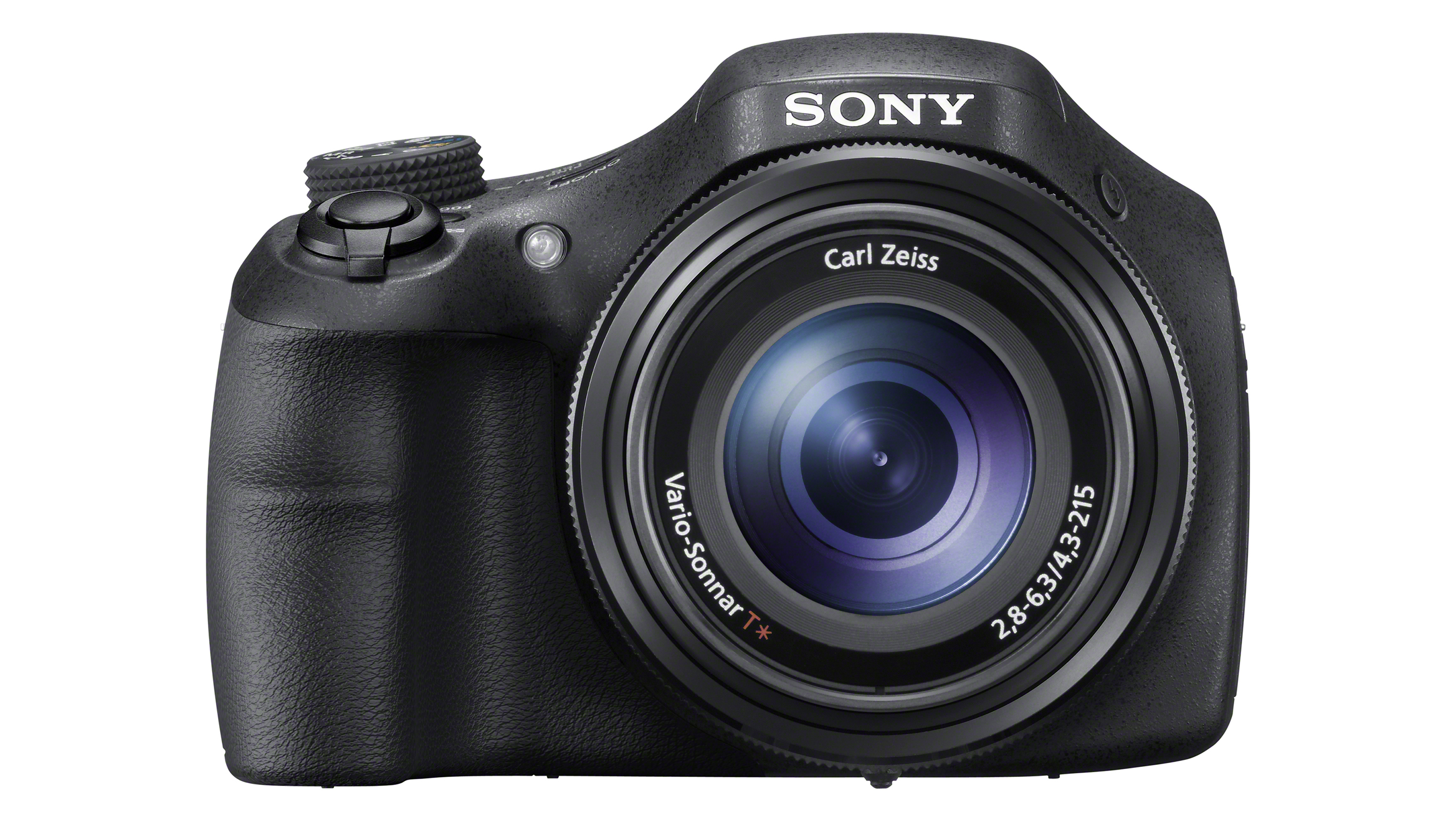Why you can trust TechRadar
As you'd expect from a DSLR-styled bridge camera bearing the Sony brand, the HX300 comes across as reassuringly robust and built-to-last when gripped in the palm, particularly with the lens resting dormant within its protective housing.
Though bridge models can be damn ugly at times, this one is almost attractive, thanks to gentle sloping edges and a subtle matt black finish with rubber detailing, notably around the hand grip. This proved big enough to enable us to snake three fingers around it, to leave our forefinger hovering over the shutter release.
Sony has ambitiously claimed you can 'shoot like a pro' with the HX300. In reality, having boosted the zoom power and pixel count of the previous HX200V, it's a case of 'look or feel a little bit like a pro' when shooting, courtesy of the sophisticated sub-DSLR styling.
Paying £420 / AU$600 / US$500 for a camera upon which the lens cannot be swapped feels slightly pricey, but then the whole point of this Cyber-Shot is the fact that the lens offers such a whopping reach that you won't actually want to.
In reality, though it resembles a DSLR, operationally it's more like a pimped up point and shoot, making it suitable for a widespread audience, particularly those with families who might appreciate a vast array of framing opportunities at their fingertips.
We don't get the bells and whistles that would have added appeal to photo enthusiasts that the serious-looking exterior suggests. There's no raw capture, no accessory port or hotshoe, no GPS, no eye-activation for the electronic viewfinder and no built-in Wi-Fi that its price tag might have been able to justify the inclusion of.
There will doubtless be those who will also grumble that the Sony HX300 could have also done with a larger sensor than its modest 1/2.3-inch variety, particularly since it has chosen to cram 20 megapixels on there when others have stuck more safely at 16MP.
Shooting at maximum ISO 12800 equivalent, images appear quite heavily processed and softened, so you'd probably want to avoid that option entirely.
However, it does actually achieve something that the majority of superzooms fail to do, and that's deliver sharp results even when shooting handheld at maximum telephoto. As a result, there will be an audience out there who feel that paying a slight premium for the Sony HX300 could be worth it.
We liked
The rock solid build, the sophisticated styling, the sloping edges of the design and of course the extremely broad focal range are all very appealing features.
We disliked
The Sony HX300 lacks the sort of features one might expect from a bridge camera at this price, such as principally raw shooting, but also dedicated buttons for the likes of ISO, eye-activated viewfinder... our list of 'wants' goes on.
Final verdict
The Sony Cyber-Shot HX300 looks great, is nicely designed, feels robust and built to last when grasped in the hands, and we enjoyed the fact that we could operate the zoom manually and also achieve sharp results when shooting handheld towards the telephoto end of the zoom.
The negatives are a lack of raw shooting, a relatively small sensor burdened with a high pixel count and omissions including Wi-Fi, GPS, a hotshoe... the list goes on.
Added to this is the fact that the SonyHX300 has a not inconsiderable price tag of £420 / AU$600 / US$500, which means you have to really want the extra zoom poke on offer here to justify the expense.
Alternatives to this camera are many and varied if it's big zooms your after. For example, also offering a 50x optical reach is the 16MP Fujifilm Finepix SL1000, while the same brand's HS50 EXR comes with tilting screen and manually operated 42x optical zoom that enables you to frame photos slightly more precisely, and we're big fans of Fuji's HS range as a result.
There's also the 50x optical zoom Canon PowerShot SX50 HS, the 42x Nikon P520 and Olympus SP-820UZ. We'd place the Sony HX300 in front of these options we were making a purchase choice ourselves; so for us it would really come down to this or the Fuji.

When not wrestling wild bears or leaping tall buildings in a single bound, Gavin Stoker can be found editing British Photographic Industry News, the UK's longest running and only photo trade title. He has over 25 years of camera testing and reviewing under his belt.
